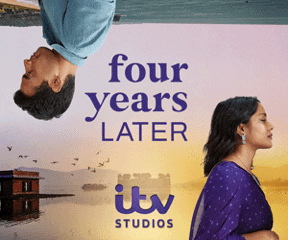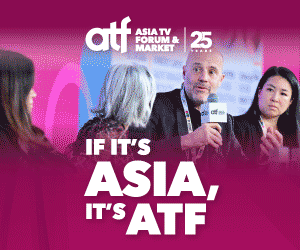Karen Appathurai-Wiggins and the team at production house Matchbox Pictures Asia spent a good part of this year asking: ‘What’s beautiful?’ After that, ‘What’s beautiful in Asia?’
And the answers are....? Wait and see. Right now she’s not telling, reluctant to give anything away before the end-August premiere of NBCUniversal format, How Do I Look? Asia, on Diva channel.
What she will say right now is that there was a bridge to cross between notions of TV beauty as skinny models in talent shows and her goal: making participants the best versions of themselves.
“We weren’t just casting a show, but dealing with perceptions of beauty,” she says, adding: “In the U.S. version, people on the show are really different. In Asia, the differences are much more subtle”.
Appathurai-Wiggins, Matchbox Asia’s series producer for unscripted content, says the format is “about empowering women in a culture fixated on beauty”.
“It was a re-education process for a lot of people involved... we are so used to the modelling shows with young skinny girls, and not the shows that empower women and mean not one size fits all,” she says.
The eight-part series is part of a slate of productions Appathurai-Wiggins is driving for Matchbox Pictures’ six-month-old Singapore-based production unit.
Before How Do I Look? Asia, she was executive producer for five-part constructed-reality series, Facing Up To Fazura, for E! Asia, and series producer on constructed reality series, It Takes Gutz to be a Gutierrez season two for E! Asia. The newest title is E! Top 5 Philippines, an eight-part 30-minute “clip countdown with a Tonight show feel”.
Over the past decade, Appathurai-Wiggins’ prints have, in one role or another, been all over properties such as The Real Housewives of Melbourne and Formal Wars for Matchbox Pictures, Big Brother Australia for Endemol Australia, Prank Patrol for activeTV Australia, and Gardening Australia for the ABC.
Figuring out beauty was but one of the challenges Matchbox has faced in its short history in Asia, where channels are on a serious hunt...
Karen Appathurai-Wiggins and the team at production house Matchbox Pictures Asia spent a good part of this year asking: ‘What’s beautiful?’ After that, ‘What’s beautiful in Asia?’
And the answers are....? Wait and see. Right now she’s not telling, reluctant to give anything away before the end-August premiere of NBCUniversal format, How Do I Look? Asia, on Diva channel.
What she will say right now is that there was a bridge to cross between notions of TV beauty as skinny models in talent shows and her goal: making participants the best versions of themselves.
“We weren’t just casting a show, but dealing with perceptions of beauty,” she says, adding: “In the U.S. version, people on the show are really different. In Asia, the differences are much more subtle”.
Appathurai-Wiggins, Matchbox Asia’s series producer for unscripted content, says the format is “about empowering women in a culture fixated on beauty”.
“It was a re-education process for a lot of people involved... we are so used to the modelling shows with young skinny girls, and not the shows that empower women and mean not one size fits all,” she says.
The eight-part series is part of a slate of productions Appathurai-Wiggins is driving for Matchbox Pictures’ six-month-old Singapore-based production unit.
Before How Do I Look? Asia, she was executive producer for five-part constructed-reality series, Facing Up To Fazura, for E! Asia, and series producer on constructed reality series, It Takes Gutz to be a Gutierrez season two for E! Asia. The newest title is E! Top 5 Philippines, an eight-part 30-minute “clip countdown with a Tonight show feel”.
Over the past decade, Appathurai-Wiggins’ prints have, in one role or another, been all over properties such as The Real Housewives of Melbourne and Formal Wars for Matchbox Pictures, Big Brother Australia for Endemol Australia, Prank Patrol for activeTV Australia, and Gardening Australia for the ABC.
Figuring out beauty was but one of the challenges Matchbox has faced in its short history in Asia, where channels are on a serious hunt for local relevance and production ambitions – if not budgets – are soaring.
Another challenge is that the type of constructed reality, such as that of Facing Up To Fazura is so new in, in this case, Malaysia, and producers need to calibrate drama carefully. “In Fazura, a girl was pushed into a pool. In Australia, that would have been a tiny drama,” Appathurai-Wiggins says, adding: “But big or small, there’s always the subtext that you can explore no matter where you are.”
Editors in Asia are also walking new paths in telling more dramatic, engaging stories that are local but can play anywhere in the world. “There are no format points in constructed reality other than telling a great story,” Appathurai-Wiggins says. “Editors who can take that vision and make it reality are really difficult to find,” she adds.
New-generation editing workflows are a mix of cross-border communications, multiple-language skills, Dropbox, Skype WhatsApp and Viber. Camera techniques are also a mix of traditional, professional and consumer tech, as well as mobile phones. “We use every bit of technology we can,” she says, adding: “This is both a style choice and a budget necessity”.
On Fazura, “we took every opportunity we had to follow the story”. This meant shooting on mobile phones to capture an unplanned moment. “We got some of our best material in the car,” she says.
Living with mobile-phone quality is easy. “Audiences will forgive you for a less than perfect shot if the story is good,” she says, adding: “That’s what they are watching for.”



















